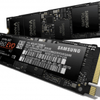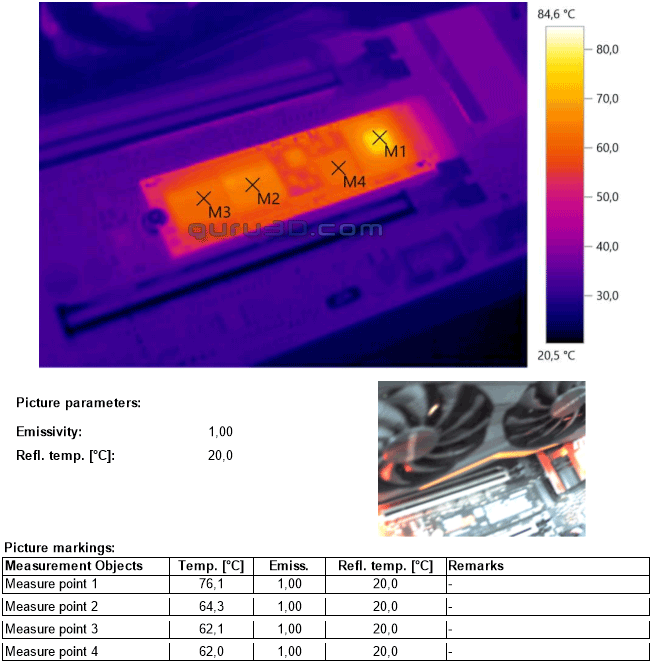SSD Operating Temperatures
Thermal Imaging Temperature Measurements
A new addition to our reviews is the inclusion of Forward Looking Infra Red thermal images of hardware. Over the past years we have been trying to figure out what the best possible way is to measure temperatures on hardware. Multiple options are available but the best thing to do is to visualize heat coming from the product or component being tested. The downside of thermal imaging hardware is simple, FLIR cameras with a bit of decent resolution costs up-to 10,000 EUR. Hence we passed on it for a long time. With a thermal imaging camera a special lens focuses the infrared light emitted by all of the objects in view. This focused light is scanned by a phased array of infrared-detector elements. The detector elements create a very detailed temperature pattern called a thermogram. It only takes about one-thirtieth of a second for the detector array to obtain the temperature information to make the thermogram. This information is obtained from several thousand points in the field of view of the detector array. The thermogram created by the detector elements is translated into electric impulses. The impulses are sent to a signal-processing unit, a circuit board with a dedicated chip that translates the information from the elements into data for the display. The signal-processing unit sends the information to the display, where it appears as various colors depending on the intensity of the infrared emission. The combination of all the impulses from all of the elements creates the image.
The default load heat signature is in roughly 76 Degrees C under (heavy stress) load. As we point our thermal camera at the SSD we see that the controller (M1) lights up significantly. This of courtse is a heavy stress activity test. But that surely is on the high side. We would like to see some sort of heat-sink applied to the M2 unit as this is bound to thermal throttle. Samsung explains it below:
Thermal solution
Under extreme workloads, some users may have suffered from performance drops due to heat generation issues with M.2 NVMe SSDs such as the 950 PRO, which provide high performance on a small form-factor. The 960 EVO, just like the 960 PRO, adopts a heat spreading label to dissipate heat more efficiently during heavy workloads. It achieves this by integrating a thin copper film, and because copper is a great heat conductor it helps to shed heat faster than would be possible without label. The dynamic thermal guard (DTG) trigger point is delayed by 16 seconds relative to the 950 PRO.
This translates to 60% more data transferred before DTG or 253GB during sequential read. Users can therefore use their 960 EVO more freely and without worrying about performance degradation. Furthermore, many users may run benchmark tests such as ATTO disk benchmark to check for performance degradation during various test condition. The 960 EVO shows better performance under various workloads.


